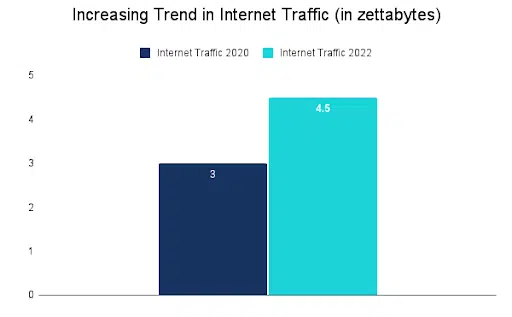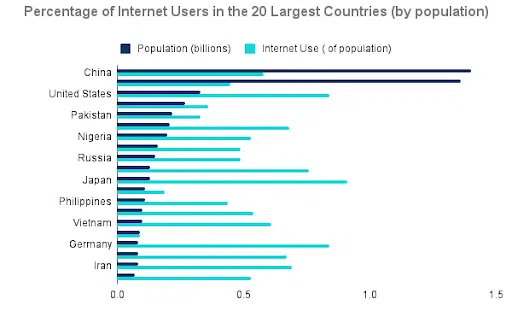Investing in Website Localization — What’s all the Fuss About?
Let’s face it — marketing teams in any industry are facing an upward battle in 2022. Companies across the board are working diligently to engage online consumers eager to find brands that resonate directly with them in today’s uncertain world. As we all continue to struggle with pandemic fatigue, companies “that craft inclusive, inspiring and distinctive experiences will remind consumers of the world they aspire to have back.”[1] But how do companies connect with today’s online consumers and build their trust? The answer lies in website localization, and here’s why.
Inclusive Marketing is the New Black
Even before the pandemic, it was unfashionable to launch aggressive marketing strategies. After all, no one wants to feel as though they’re sitting through an annoying sales pitch. Since the pandemic, however, there is an increased need for a more personable approach to our marketing strategy. It is all about a softer, gentler, more human mindset. Marketers that focus on community and inclusion, and those that demonstrate empathy and understanding with their target audience will reap the benefits. One sure way to create this human-centric messaging is by investing in website localization. But many companies still struggle to understand exactly what this means. Is it simply translating website content into different languages? No. Website localization goes well beyond translation.
Understanding Website Localization
Website localization requires a team of specialized translators who ensure the translation accurately reflects the intended message and connects with the intended audience. This means analyzing (and likely also localizing) your website’s layout and spacing, images, video, audio, and other localizable conventions so that your messaging resonates to customers in specific locales.The overall goal of website localization is to create a website that looks and feels as though it were designed with your diverse audience in mind. Although website localization involves a lot of initial investment and work, the benefits are well worth it.
Localizing for Global Markets
According to the US Chamber of Commerce, despite some pretty significant challenges (inflation, supply chain bottlenecks, the pandemic, etc), 2022 looks promising for global business operations.
[E]conomic growth rebounded strongly in 2021 to about 6% globally, with U.S. growth estimated to have clocked in at the same level – its strongest reading since 1984…While Omicron’s spread may dampen growth in early 2022, the year ahead is expected to record robust – if somewhat slower – growth. – Us Chamber of Commerce
In fact, the Chamber points to the continued acceleration of digitalization and how companies of all sizes stand to benefit. “In 2020, global internet traffic was estimated to be more than 3 zettabytes, or 3 trillion gigabytes, and it will be 50% larger in 2022. This trend is creating substantial new opportunities for American companies of all sizes and diverse sectors — including a host of small businesses and service providers — and not just firms traditionally seen as “internet companies. [2]
Data Source: The World Bank
However, global expansion really couldn’t be possible in today’s online world without investing in website localization. Why? Because website localization allows companies both large and small to better reach their international customers. As technology continues to advance and the world’s population continues to grow, the number of internet users will likewise increase. In fact, Cybercrime Magazine predicts that by 2030, there will be more than 7.5 billion Internet users “(90 percent of the projected world population of 8.5 billion, 6 years of age and older).” [3] But we don’t have to jump to 2030 to see this upward trajectory. Currently, the magazine estimates that in the world’s 20 largest countries alone, over 55 percent of people are actively online.
Data Source: Cybercrime Magazine
By sticking to an English-only, US-centric website, you are missing out on a substantial amount of business growth opportunity. Why limit your company’s growth with monolingual and monocultural messaging? It is also important to keep in mind, however, that localizing your website isn’t just for those who market their services abroad. A growing number of small and medium enterprises (SMEs) right here, in the United States, are investing in website localization.
Localizing For Domestic Markets
If your business operates domestically within the United States, investing in professional website localization will help you reach and engage with the growing linguistically and culturally-diverse US market. According to Translators Without Borders, “[t]here are between 350 and 430 languages spoken in the United States of America, making it one of the most linguistically diverse countries in the world.” [4]
Marketing in the US
By catering solely to the US native English-speaking population, companies are truly limiting their potential growth.The Spanish language alone is spoken by some 41 million US residents, and *Hispanic communities across the US hold a strong online purchasing power. In fact, it is estimated that in just a few short years, these highly diverse communities will account for 12 percent of all US buying power.
The U.S. Hispanic population is diverse. These nearly 60 million individuals trace their heritage to Spanish-speaking countries in Latin America and to Spain, each with distinct demographic and economic profiles. [5]
As Forbes contributor, Isaac Mizrahi puts it, “[i]n 2022 and for years to come, diverse segments will become increasingly important for marketers looking for growth, and this will also impact the level of sophistication and attention dedicated to multicultural marketing.” [6] By investing in website localization, companies will be in a much better position to engage successfully with a growing number of diverse US communities. Website localization ensures that your company’s entire messaging — including audio and visual appeal — resonates with your intended visitors.
Your Customers Deserve a Customized Experience
The most successful websites invest their time and resources to ensure that their online messaging engages and speaks directly to several local markets. When a business in any industry provides this kind of localized experience, they arouse interest in their products and services, while also showing a high level of empathy and respect to their customers. And, when your online visitors can seamlessly read and understand your content, they are much more likely to remain on your website and explore what you have to offer. However, this can only be achieved with a solid commitment to a strategic localization approach.
Strategic, Professional Website Localization
Although machine translation (MT) has come a long way, using this technology as a means to translate your website can spell disaster. Not only do you risk grammatical and linguistic mistakes but also cultural faux pas. A poorly translated website can quickly alienate you from your target market and damage your reputation. However, businesses who partner with a language services provider (LSP) well-versed in website localization stand to gain access to the growing diverse US marketplace as well as to international markets. Propio Language Services is one such LSP.
Propio Language Services offers clients throughout the United States and abroad, a full suite of language solutions, including website localization. As a respected industry leader, Propio provides website localization across industries, including healthcare, social services, education, legal, and more. With an established quality assurance process and state-of-the-art technology, our team of dedicated professionals ensures the best quality, accuracy, and consistency for all of your language services needs. When you’re ready to engage and build trust with your diverse customers, Propio will be here for you.
Reach out to Propio Language Services today.
References
- Peter Adams, Chris Kelly and Natalie Koltun. “Looking Ahead: 9 Trends That Will Steer Marketing in 2022.” Marketing Dive, 11 Jan. 2022, https://www.marketingdive.com/news/looking-ahead-9-trends-that-will-steer-marketing-in-2022/616935/.
- “10 Trends in 2022: Global Perspectives for Business.” U.S. Chamber of Commerce, https://www.uschamber.com/international/ten-trends-in-2022-global-perspectives-for-business.
- Freeze, Di. “Humans on the Internet Will Triple from 2015 to 2022 and Hit 6 Billion.” Cybercrime Magazine, 27 July 2019, https://cybersecurityventures.com/how-many-internet-users-will-the-world-have-in-2022-and-in-2030/#home/?view_1_page=2.
- “Language Data for the United States of America.” Translators without Borders, 7 Apr. 2021, https://translatorswithoutborders.org/language-data-for-the-united-states-of-america.
- Noe-Bustamante, Luis. “Key Facts about U.S. Hispanics and Their Diverse Heritage.” Pew Research Center, Pew Research Center, 31 May 2020, https://www.pewresearch.org/fact-tank/2019/09/16/key-facts-about-u-s-hispanics/.
- Mizrahi, Isaac. “Multicultural Marketing Investments Expected to Grow in 2022.” Forbes, Forbes Magazine, 25 Jan. 2022, https://www.forbes.com/sites/isaacmizrahi/2022/01/24/multicultural-marketing-investments-expected-to-grow-in-2022/?sh=62f33fce1524.
In addition to:
- The World Bank. “World Development Report 2021”, The World Bank, https://www.worldbank.org/en
- Obolenskaya, Christina. “Hispanic Buying Power Rising in US, Bolstering Consumer Sectors.” Insider Intelligence, Insider Intelligence, 21 Dec. 2021, https://www.emarketer.com/content/hispanic-buying-power-rising-us-bolstering-consumer-sectors
- Noe-Bustamante, Luis, et al. “U.S. Hispanic Population Surpassed 60 Million in 2019, but Growth Has Slowed.” Pew Research Center, Pew Research Center, 10 July 2020, https://www.pewresearch.org/fact-tank/2019/07/08/u-s-hispanic-population-reached-new-high-in-2018-but-growth-has-slowed/
- CSA Research – View, https://insights.csa-research.com/reportaction/8057/Marketing.










